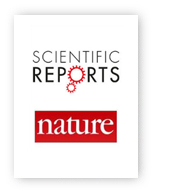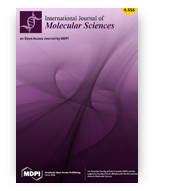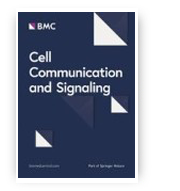The impact of regular sperm donation on bulls’ seminal plasma hormonal profile and phantom response
Alicja Kowalczyk, Elżbieta Gałęska, Ewa Czerniawska-Piątkowska, Anna Szul, Leszek Hebda
Scientific Reports
 The aim of this study was to analyze the relationship between the concentration of hormones in the seminal plasma, the bull maintenance system in the insemination station, and the regularity of sperm donation and the response to the phantom (libido level). An additional goal was to determine whether there is a relationship between the hormonal profile in the blood, the sperm plasma, the oxidative and antioxidant profile in the blood of bulls and the biometry of their testicles and scrotum, as well as the quality of their sperm in both different seasons and intensities of reproductive use. For the study, 220 healthy and sexually mature Polish Holstein–Friesian bulls were used. They all had normal libido and were fed equally. The animals were grouped according to the scheme: young (16–20 month/n = 60) and old (26–30 month/n = 60) including: individually housed (n = 30) and group housed (n = 30) young, old individually housed (n = 30) and group housed (n = 30) (n total animals = 120); young animals donating semen once a week (every Thursday) (n = 25) and sporadically (once every two months on a random day of the week) (n = 25), old animals donating semen once a week (every Thursday) (n = 25 ) and sporadic donors (once every two months on a random day of the week) (n = 25) (n total animals = 100). When analyzing the results of this study, it should be stated that regular use has a positive effect on the secretion of sex hormones in bulls. Higher levels of testosterone and lower levels of estradiol and prostaglandins resulted in higher sexual performance, expressed by a stronger response to the phantom. The differences in favor of regular use were independent of the bull's age. The results of our research illustrate that the quality of semen and its freezing potential may depend on the season and frequency of its collection, as well as on the age of the males.
The aim of this study was to analyze the relationship between the concentration of hormones in the seminal plasma, the bull maintenance system in the insemination station, and the regularity of sperm donation and the response to the phantom (libido level). An additional goal was to determine whether there is a relationship between the hormonal profile in the blood, the sperm plasma, the oxidative and antioxidant profile in the blood of bulls and the biometry of their testicles and scrotum, as well as the quality of their sperm in both different seasons and intensities of reproductive use. For the study, 220 healthy and sexually mature Polish Holstein–Friesian bulls were used. They all had normal libido and were fed equally. The animals were grouped according to the scheme: young (16–20 month/n = 60) and old (26–30 month/n = 60) including: individually housed (n = 30) and group housed (n = 30) young, old individually housed (n = 30) and group housed (n = 30) (n total animals = 120); young animals donating semen once a week (every Thursday) (n = 25) and sporadically (once every two months on a random day of the week) (n = 25), old animals donating semen once a week (every Thursday) (n = 25 ) and sporadic donors (once every two months on a random day of the week) (n = 25) (n total animals = 100). When analyzing the results of this study, it should be stated that regular use has a positive effect on the secretion of sex hormones in bulls. Higher levels of testosterone and lower levels of estradiol and prostaglandins resulted in higher sexual performance, expressed by a stronger response to the phantom. The differences in favor of regular use were independent of the bull's age. The results of our research illustrate that the quality of semen and its freezing potential may depend on the season and frequency of its collection, as well as on the age of the males.
DOI:10.1038/s41598-021-90630-8
Isoprenoid Derivatives of Lysophosphatidylcholines Enhance Insulin and GLP-1 Secretion through Lipid-Binding GPCRs
Anna Drzazga, Daria Kamińska, Anna Gliszczyńska, Edyta Gendaszewska-Darmach
International Journal of Molecular Sciences
 Insulin plays a significant role in carbohydrate homeostasis as the blood glucose lowering hormone. Glucose-induced insulin secretion (GSIS) is augmented by glucagon-like peptide (GLP-1), a gastrointestinal peptide released in response to ingesting nutriments. The secretion of insulin and GLP-1 is mediated by the binding of nutrients to G protein-coupled receptors (GPCRs) expressed by pancreatic β-cells and enteroendocrine cells, respectively. Therefore, insulin secretagogues and incretin mimetics currently serve as antidiabetic treatments. This study demonstrates the potency of synthetic isoprenoid derivatives of lysophosphatidylcholines (LPCs) to stimulate GSIS and GLP-1 release. Murine insulinoma cell line (MIN6) and enteroendocrinal L cells (GLUTag) were incubated with LPCs bearing geranic acid (1-GA-LPC), citronellic acid (1-CA-LPC), 3,7-dimethyl-3-vinyloct-6-enoic acid (GERA-LPC), and (E)-3,7,11-trimethyl- 3-vinyldodeca-6,10-dienoic acid (1-FARA-LPC). Respective free terpene acids were also tested for comparison. Besides their insulin- and GLP-1-secreting capabilities, we also investigated the cytotoxicity of tested compounds, the ability to intracellular calcium ion mobilization, and targeted GPCRs involved in maintaining lipid and carbohydrate homeostasis. We observed the high cytotoxicity of 1-GERA-LPC and 1-FARA-LPC in contrast 1-CA-LPC and 1-GA-LPC. Moreover, 1-CA-LPC and 1-GA-LPC demonstrated the stimulatory effect on GSIS and 1-CA-LPC augmented GLP-1 secretion. Insulin and GLP-1 release appeared to be GPR40-, GPR55-, GPR119- and GPR120-dependent.
Insulin plays a significant role in carbohydrate homeostasis as the blood glucose lowering hormone. Glucose-induced insulin secretion (GSIS) is augmented by glucagon-like peptide (GLP-1), a gastrointestinal peptide released in response to ingesting nutriments. The secretion of insulin and GLP-1 is mediated by the binding of nutrients to G protein-coupled receptors (GPCRs) expressed by pancreatic β-cells and enteroendocrine cells, respectively. Therefore, insulin secretagogues and incretin mimetics currently serve as antidiabetic treatments. This study demonstrates the potency of synthetic isoprenoid derivatives of lysophosphatidylcholines (LPCs) to stimulate GSIS and GLP-1 release. Murine insulinoma cell line (MIN6) and enteroendocrinal L cells (GLUTag) were incubated with LPCs bearing geranic acid (1-GA-LPC), citronellic acid (1-CA-LPC), 3,7-dimethyl-3-vinyloct-6-enoic acid (GERA-LPC), and (E)-3,7,11-trimethyl- 3-vinyldodeca-6,10-dienoic acid (1-FARA-LPC). Respective free terpene acids were also tested for comparison. Besides their insulin- and GLP-1-secreting capabilities, we also investigated the cytotoxicity of tested compounds, the ability to intracellular calcium ion mobilization, and targeted GPCRs involved in maintaining lipid and carbohydrate homeostasis. We observed the high cytotoxicity of 1-GERA-LPC and 1-FARA-LPC in contrast 1-CA-LPC and 1-GA-LPC. Moreover, 1-CA-LPC and 1-GA-LPC demonstrated the stimulatory effect on GSIS and 1-CA-LPC augmented GLP-1 secretion. Insulin and GLP-1 release appeared to be GPR40-, GPR55-, GPR119- and GPR120-dependent.
DOI:10.3390/ijms22115748
Hyoscyamus albus nortropane alkaloids reduce hyperglycemia and hyperinsulinemia induced in HepG2 cells through the regulation of SIRT1/NF-kB/JNK pathway
Anna Kowalczuk, Nabila Bourebaba, Katarzyna Kornicka-Garbowska, Eliza Turlej, Krzysztof Marycz, Lynda Bourebaba
Cell Communication and Signaling
 Background Chronic superphysiological glucose and insulin concentrations are known to trigger several tissue and organ failures, including insulin resistance, oxidative stress and chronic low-grade inflammation. Hence, the screening for molecules that may counteract such conditions is essential in current existing therapeutic strategies, thereby the use of medicinal plant derivatives represents a promising axis in this regard. Methods In this study, the effect of a selected traditional medicinal plant, Hyoscyamus albus from which, calystegines have been isolated, was investigated in an experimental model of hyperinsulinemia and hyperglycemia induced on HepG2 cells. The mRNA and protein expression levels of different insulin signaling, gluconeogenic and inflammatory pathway- related molecules were examined. Additionally, cell viability and apoptosis, oxidative stress extent and mitochondrial dysfunctions were assayed using flow cytometric and qRT-PCR techniques. Results Treatment of IR HepG2 cells with calystegines strongly protected the injured cells from apoptosis, oxidative stress and mitochondrial integrity loss. Interestingly, nortropane alkaloids efficiently regulated the impaired glucose metabolism in IR HepG2 cells, through the stimulation of glucose uptake and the modulation of SIRT1/Foxo1/G6PC/mTOR pathway, which is governing the hepatic gluconeogenesis. Furthermore, the alkaloidal extract restored the defective insulin signaling pathway, mainly by promoting the expression of Insr at the mRNA and protein levels. What is more, treated cells exhibited significant mitigated inflammatory response, as evidenced by the modulation and the regulation of the NF- κB/JNK/TLR4 axis and the downstream proinflammatory cytokines recruitment. Conclusion Overall, the present investigation demonstrates that calystegines from Hyoscyamus albus provide cytoprotection to the HepG2 cells against insulin/glucose induced insulin resistance and apoptosis due to the regulation of SIRT1/Foxo1/G6PC/mTOR and NF-κB/JNK/TLR4 signaling pathways.
Background Chronic superphysiological glucose and insulin concentrations are known to trigger several tissue and organ failures, including insulin resistance, oxidative stress and chronic low-grade inflammation. Hence, the screening for molecules that may counteract such conditions is essential in current existing therapeutic strategies, thereby the use of medicinal plant derivatives represents a promising axis in this regard. Methods In this study, the effect of a selected traditional medicinal plant, Hyoscyamus albus from which, calystegines have been isolated, was investigated in an experimental model of hyperinsulinemia and hyperglycemia induced on HepG2 cells. The mRNA and protein expression levels of different insulin signaling, gluconeogenic and inflammatory pathway- related molecules were examined. Additionally, cell viability and apoptosis, oxidative stress extent and mitochondrial dysfunctions were assayed using flow cytometric and qRT-PCR techniques. Results Treatment of IR HepG2 cells with calystegines strongly protected the injured cells from apoptosis, oxidative stress and mitochondrial integrity loss. Interestingly, nortropane alkaloids efficiently regulated the impaired glucose metabolism in IR HepG2 cells, through the stimulation of glucose uptake and the modulation of SIRT1/Foxo1/G6PC/mTOR pathway, which is governing the hepatic gluconeogenesis. Furthermore, the alkaloidal extract restored the defective insulin signaling pathway, mainly by promoting the expression of Insr at the mRNA and protein levels. What is more, treated cells exhibited significant mitigated inflammatory response, as evidenced by the modulation and the regulation of the NF- κB/JNK/TLR4 axis and the downstream proinflammatory cytokines recruitment. Conclusion Overall, the present investigation demonstrates that calystegines from Hyoscyamus albus provide cytoprotection to the HepG2 cells against insulin/glucose induced insulin resistance and apoptosis due to the regulation of SIRT1/Foxo1/G6PC/mTOR and NF-κB/JNK/TLR4 signaling pathways.
DOI:10.1186/s12964-021-00735-w
Biosolubilization of low-rank coal by the newly isolated strain Streptomyces fulvissimus K59
Justyna Sobolczyk-Bednarek, Anna Choińska, Wojciech Łaba
Fuel
 Lignite, as low rank coal (LRC) has some disadvantages compared to hard coal, its use is limited. Therefore alternative and ecological conversion methods are being sought. Microbiological liquefaction of lignite is a clean and cost-effective technology for the treatment of solid waste resources, that allows for recovery of complex aromatic compounds from LRC. These can be further converted into products of agricultural relevance, with added value. In the presented studies 10 microbial strains were isolated from coal samples. One of the strains, identified as Streptomyces fulvissimus K59 was selected and applied in biosolubilization of coal in a liquid culture. Capacity of the K59 isolate for coal decomposition was tested in mineral medium, in modified yeast extract-peptone-glucose medium (YPG) containing 1% unprocessed carbon and in YPG with lignite treated using 2 N, 5 N and 8 N HNO3. A Plackett-Burman design was applied for the screening of influential process parameters. The most efficient biosolubilization process was achieved after substrate processing with 5 N HNO3, in the presence of 10 g/L sucrose and 50 g/L lignite, where the resultant concentration of biosolubilized lignite was 15 times higher as compared to the results obtained using crude coal.
Lignite, as low rank coal (LRC) has some disadvantages compared to hard coal, its use is limited. Therefore alternative and ecological conversion methods are being sought. Microbiological liquefaction of lignite is a clean and cost-effective technology for the treatment of solid waste resources, that allows for recovery of complex aromatic compounds from LRC. These can be further converted into products of agricultural relevance, with added value. In the presented studies 10 microbial strains were isolated from coal samples. One of the strains, identified as Streptomyces fulvissimus K59 was selected and applied in biosolubilization of coal in a liquid culture. Capacity of the K59 isolate for coal decomposition was tested in mineral medium, in modified yeast extract-peptone-glucose medium (YPG) containing 1% unprocessed carbon and in YPG with lignite treated using 2 N, 5 N and 8 N HNO3. A Plackett-Burman design was applied for the screening of influential process parameters. The most efficient biosolubilization process was achieved after substrate processing with 5 N HNO3, in the presence of 10 g/L sucrose and 50 g/L lignite, where the resultant concentration of biosolubilized lignite was 15 times higher as compared to the results obtained using crude coal.
DOI:10.1016/j.fuel.2021.121082
An insight into the tribe Hexathrombiini (Actinotrichida: Trombidioidea, Microtrombidiidae, Eutrombidiinae) with new data on host-parasite interaction
Joanna Mąkol, Jaime Mayoral, Stefan Friedrich
The European Zoological Journal
 The status of the genera in the small microtrombidiid mite tribe Hexathrombiini is reevaluated. Type specimens representing all genera were studied and diagnostic characters for Hexathrombiini are reviewed, summarized, and new data and a key to the genera in the tribe are provided: Alhamitrombium, Beronium, Hexathrombium and Hoplothrombium. Hexathrombium is the most speciose genus in the tribe and species recorded from South America are compared, as well as those with a divided pygidial plate. A provisional key to species assigned to Hexathrombium is provided. Finally, Hexathrombium abirami was captured in Peru parasitizing a bright metallic tiger beetle (Tetracha fulgida). A total of 361 larvae were removed parasitizing a single carabid host; this is the highest load of parasites reported in terrestrial Parasitengona mites associated with arthropods. This capture represents a new record of Hexathrombiini mites for Peru. A redescription of He. abirami using all specimens available to date is included.
The status of the genera in the small microtrombidiid mite tribe Hexathrombiini is reevaluated. Type specimens representing all genera were studied and diagnostic characters for Hexathrombiini are reviewed, summarized, and new data and a key to the genera in the tribe are provided: Alhamitrombium, Beronium, Hexathrombium and Hoplothrombium. Hexathrombium is the most speciose genus in the tribe and species recorded from South America are compared, as well as those with a divided pygidial plate. A provisional key to species assigned to Hexathrombium is provided. Finally, Hexathrombium abirami was captured in Peru parasitizing a bright metallic tiger beetle (Tetracha fulgida). A total of 361 larvae were removed parasitizing a single carabid host; this is the highest load of parasites reported in terrestrial Parasitengona mites associated with arthropods. This capture represents a new record of Hexathrombiini mites for Peru. A redescription of He. abirami using all specimens available to date is included.
DOI:10.1080/24750263.2021.1899316









